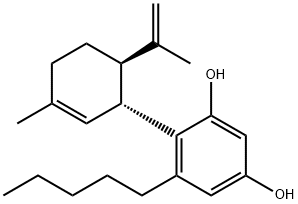O-1602 , 98% , 317321-41-8
| Pack Size | Price | Stock | Quantity |
| 5mg | RMB2042.40 | In Stock |
|
| others | Enquire |
PRODUCT Properties
| Boiling point: | 401.6±45.0 °C(Predicted) |
| Density | 1.073±0.06 g/cm3(Predicted) |
| storage temp. | Store at -20°C |
| solubility | Soluble in methyl acetate (supplied pre-dissolved -10mg/ml) |
| form | Powder |
| pka | 9.92±0.45(Predicted) |
| color | White to light yellow |
Description and Uses
O-1602 is an agonist of GPR55 (EC50 = 13 nM in a GTPγS binding assay) and a derivative of the GPR55 agonist abnormal cannabidiol . It is selective for GPR55 over cannabinoid (CB) receptor 1 (CB1) and CB2 (EC50s = >30 μM for both in GTPγS binding assays). O-1602 (50 μM) reduces growth of Mz-ChA-1, HuCCT-1, CC-LP-1, and SG231 cholangiocarcinoma cells and reduces tumor growth in a Mz-ChA-1 mouse xenograft model when administered at a dose of 10 mg/kg per day. O-1602 increases calcium mobilization and lipogenesis in 3T3-L1 adipocytes in a concentration-dependent manner and increases food intake and fat mass in rats; however, this effect was also observed in mice lacking GPR55. O-1602 reduces movement-induced firing of nociceptive C fibers in a rat model of inflammatory joint pain. It also decreases IL-6 and TNF-α levels and myeloperoxidase activities in the plasma, lungs, and pancreas in a mouse model of acute pancreatitis.
O-1602 is an analog of cannabidiol that is a potent agonist at the GPR55 cannabinoid receptor.
Safety
| Symbol(GHS) |   GHS02,GHS07 |
| Signal word | Danger |
| Hazard statements | H225-H319-H336 |
| Precautionary statements | P210-P240-P241-P242-P243-P261-P264-P271-P280-P303+P361+P353-P304+P340-P305+P351+P338-P312-P337+P313-P370+P378-P403+P233-P403+P235-P405-P501 |


